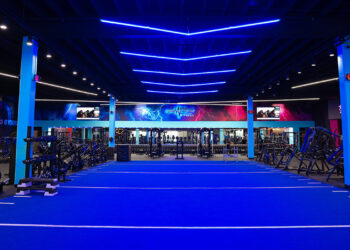Sports & Fitness Insurance Corporation shares the top sources of health club claims and how to prevent injury and subsequent claims.
As with many businesses open to the public, the majority of general liability claims filed against health clubs are variations of the classic “slip and fall.” These can be caused by clutter or poor housekeeping, poor facility design,or simply when a club member is not paying enough attention to what they’re doing. While such slip and falls are relatively common in public spaces, health clubs are unique in terms of their specific exposures. With that in mind, we’ve put together this short introduction to insurance claims among health clubs.
Top Sources of Health Club Claims
Source: Stepping on or off of a moving treadmill.
Although this is almost always a user error rather than club negligence or malfunctioning equipment, it can become a professional liability claim if the injured person was not instructed on the proper use of the treadmill. The best claim prevention includes offering instruction on the proper use of equipment to new members and offering the instruction again annually as their membership contracts renew.
Best Defense: Ask members to sign a statement that they have received or declined instruction with proper use of equipment.
Source: Slip and fall in a wet area.
These claims are most likely to occur around saunas or steam rooms, jacuzzis and pools but can also happen in shower areas and entrances on rainy days.
Best Defense: Non-slip mats and clearly visible caution signage are the best deterrents.
Overview of General Liability Risk Management
Health club general liability claims usually revolve around the condition of the premises and equipment. So, regular cleaning and maintenance of the entire facility should be performed regularly. Fitness equipment should only be purchased from reputable manufacturers who carry product liability. If an injury occurs related to cardio or strength equipment that malfunctions, resulting claims can be subrogated against the manufacturer.
Here are some important steps a facility can take ahead of time to prevent injury and subsequent claims:
Equipment Maintenance
- Keep detailed maintenance logs.
- Follow manufacturer’s guidelines for proper care and cleaning.
- Only use technicians and parts approved by the manufacturer.
- Safety signage on equipment should be clearly visible and never removed.
- Check cardio and strength equipment daily to ensure proper functioning.
Power Cords
- Keep them out of the way of traffic areas.
- Tape them down securely and inspect them regularly.
Wet Areas
- Make rails available and secured to the walls near shower, sauna and jacuzzi exits.
- Utilize warning signs such “Caution Wet Area” or something similar.
- Use non-slip floor covers wherever possible.
- Members should be required to wear proper footwear in wet areas.
Free Weight Area
- Pick up the floor in the free weight area throughout the day.
- Staff should check any cables and/or fasteners on bars each and every day.
- Any rubber/plastic bands should be checked regularly to monitor wear and tear.
Cardio Area
- Condition of cardio and Group X equipment should be checked daily. Look for things such as worn treads on steps and other potential issues.
- Condition of the cardio flooring should be checked daily, especially worn, wet or slick sections of the floor.
Cleaning
- Disinfect all locker room and common area surfaces daily.
- Disinfect fitness equipment as often as possible during the day.










